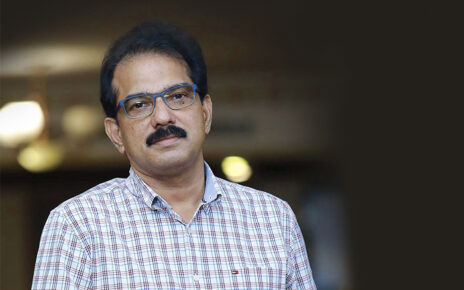To have operational efficiency and better controls, 39 DTY machines are being envisaged towards balancing equipment for value-addition in a new subsidiary, Indorama Ventures Yarns Private Limited

Indo Rama Synthetics (India) Ltd. (Indo Rama) has approved an expansion plan of Rs 600 crore towards the addition of balancing equipment for value-addition and diversifying into 700 TPD PET resin manufacturing facility at its Butibori plant. The capital expenditure of PET resin business is being envisaged in Indorama Yarns Private Limited, wholly owned subsidiary of the company. To have operational efficiency and better controls, 39 (initially 50) DTY machines are being envisaged towards balancing equipment for value-addition in a new subsidiary, Indorama Ventures Yarns Private Limited, incorporated on July 5, 2021.
The commercial production for the growth projects is likely to be started in a phased manner up to the fourth quarter of the financial year 2022-23. Incorporated in 1986, Indo Rama has emerged as one of the largest dedicated polyester manufacturers in India. With more than three decades of market presence, it is India’s most cost-efficient polyester producers. The company’s investments in innovation and capacity expansion allow it to integrate value for its large customer base.
Indo Rama has an integrated production facility in Butibori, near Nagpur, Maharashtra. The company has clocked turnover of Rs 3,901.13 crore during FY 2021-22. Commenting on this development, Chairman and Managing Director Om Prakash Lohia said, “We believe polyester will be the ‘fibre of future’, which encouraged us to foray into this business with confidence. Our well-defined quality and process management systems have enabled us to enjoy global presence.”
Trends Shaping the Industry
Manmade fibre (MMF) demand has been rising in recent years due to the increased consumption of nonwovens and technical textiles. Demand is also being driven by the rapid shift in fashion trends and increased brand consciousness. Apart from industry trends, government initiatives like the PLI scheme and National Technical Textile Mission are supporting the textile industry quite significantly. “Building on the strong performance of FY 2022, we are now in a comfortable position to capitalise on the emerging opportunities with the ongoing growth capex plan of Rs 600 crore. We have prioritized expanding and revamping our facilities, enhancing the product portfolio with high-value products, and improving operation efficiency through optimum utilisation of resources,” Lohia said.
Industries’ Structure and Development
India is the second-largest producer of polyester and viscose globally. Polyester and viscose together account for around 94% of the domestic MMF sector in terms of volume. Polyester makes up roughly 77.5% of the total, with viscose accounting for the rest. MMF is generally used to make non-cotton and blended fabrics, which are then utilised in ready-to-wear clothing, home textiles, and other industrial textiles. The MMF textile industry in India is self-reliant across the value chain right from raw materials to garments. It is poised to grow at 5-6% YoY. India produces almost all types of synthetic fibres, be it polyester, viscose, nylon, or acrylic. MMF export stood at USD 4.8 billion in 2021. India stands 6th in exports of MMF textiles accounting for 16% of the share in the global MMF textile market. USA, Europe, the UAE and Turkey are leading markets for India’s manmade textile exports.

Outlook
Increased use of nonwovens and technical textiles, changing consumer trends such as an increased emphasis on fitness and hygiene, rising brand consciousness, rapidly changing fashion trends, and increasing women’s participation in the workforce are all expected to boost demand for manmade fibres in India. Strong policy support from the government leads to bright prospects for the MMF market in India. Allowance of 100% FDI (automatic route) in the textile and apparel sector marked an FDI of about USD 3,930.33 million in 2021. By 2040, it is expected that the consumption of polyester globally will be approximately three times that of cotton fibre.
Hence, MMF will be one of the most attractive segments for future investments. India has abolished the anti-dumping duty on purified terephthalic acid, spandex and viscose staple fibres which are the key raw materials for manmade fibre. Rationalisation of GST on the manmade fibre value chain will help to boost the growth of the manmade fibre sector. Also, the National Technical Textiles Mission has been adopted with a total outlay of USD 194 million in February 2020. This has been set up for a four-year implementation period from FY 2020-21 to FY 2023-24.
The adoption of the PLI scheme for textiles is aimed at growing MMF and technical textiles components of the textile value chain. Manufacturing MMF apparel, MMF fabrics, and segments or products of technical textiles in India will receive incentives totalling Rs 10,683 crore over five years. This will provide a significant boost to the high-value MMF segment, creating new employment and trade prospects. The high prices of cotton are also adding fuel to the growth of the MMF textile sector. The government has come up with the PM Mitra Park scheme and other new schemes like RoDTEP, RoSCTL and ATUFS to boost the textile sector in India.






8 Replies to “Indo Rama Synthetics gets into an expansion mode”
Comments are closed.